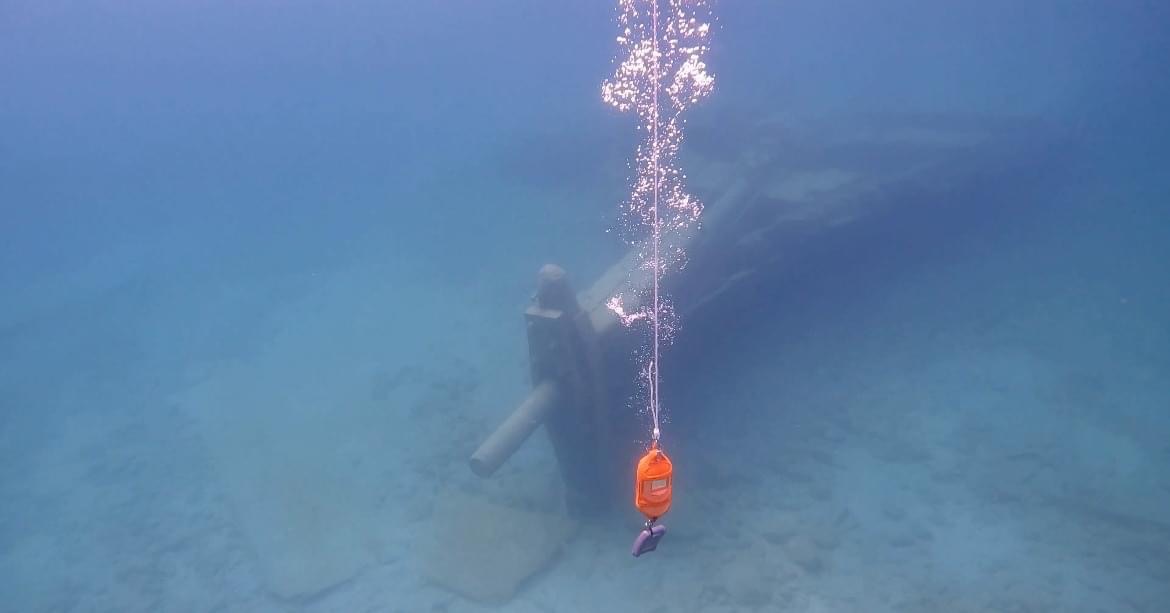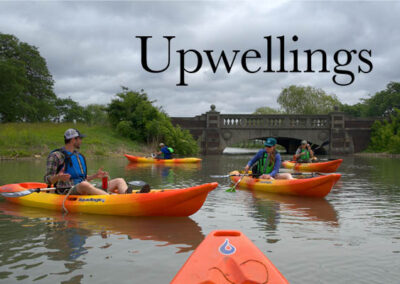Editor’s note: This article was written by 2023 MISG summer undergraduate intern Madalyn Saddler
This summer, I had the opportunity to work as an environmental research intern at Thunder Bay National Marine Sanctuary. Born and raised in Alpena, Michigan, I was first introduced to the sanctuary in elementary school through field trips to the Great Lakes Maritime Heritage Center and educational cruises on the glass bottom shipwreck tour boat, Lady Michigan, where I saw shipwrecks for the first time and was introduced to topics like invasive species, climate change, and the connectivity of water bodies. After graduating from Alpena High School in 2020, I began working as a deckhand and educator on board Lady Michigan. It was during this time that I developed my passion for stewardship, environmental conservation, and preservation of the Great Lakes. In 2020, I received my open water scuba certification, followed by advanced open water in 2021 diving shipwrecks in Thunder Bay. These events motivated me to pursue a bachelor of science in Environmental Science and Water Resource Management at Northern Michigan University.

Photo: NOAA/Thunder Bay NMS

Photo: NOAA/Thunder Bay NMS

Photo: NOAA/Thunder Bay NMS
During my 10 weeks as a Michigan Sea Grant Environmental Intern, I expanded my role at the Thunder Bay National Marine Sanctuary, conducting research on freshwater acidification in Lake Huron. The project, formally titled Freshwater Acidification Monitoring and Environmental Stewardship in the Great Lakes, aims to gather baseline data and establish the first long-term monitoring program for acidification in the Great Lakes. It is a partnership project between Thunder Bay National Marine Sanctuary and the Great Lakes Environmental Research Laboratory, and is funded by NOAA’s Ocean Acidification Program.
As an intern, I was tasked with gathering surface water samples from six predetermined sites within Thunder Bay National Marine Sanctuary. The sanctuary spans 4,300 square miles of Lake Huron and is home to a vast collection of an estimated 200 shipwrecks. Sample sites were selected diversely, ranging in depth and proximity to shore, and all marked by mooring buoys.

Image: NOAA/Thunder Bay NMS
Via research vessel, paddle board, and kayak, I visited each site once every two weeks, gathering three water samples each session using a peristaltic pump to draw water from a meter below the surface into sample vials. Also at each site, I deployed a CTD sensor, casting it down and reeling it in once it grazed the lake bottom. The sensor is designed to gather hundreds of measurements of conductivity, temperature, and depth, as it descends through the water column.

Photo: NOAA/Thunder Bay NMS

Photo: NOAA/Thunder Bay NMS
Once collected, the samples, along with associated CTD sensor water data, are shipped to the Great Lakes Environmental Research Laboratory in Ann Arbor, Michigan where project scientist Dr. Reagan Errera processes and analyzes them, gathering measurements of pH, total carbon, dissolved Inorganic Carbon, and total alkalinity, which may indicate the impact that climate change and acidification has on the Great Lakes.
One of Thunder Bay National Marine Sanctuary’s top priorities is providing students, educators, and the general public with the resources and opportunities to expand their knowledge through experiential and exploratory learning. I experienced this firsthand as an Alpena Public School student, participating in a variety of the sanctuary’s youth education programs growing up, and was fortunate to experience it again this summer, this time as an educator. The freshwater acidification project has a heavy emphasis on outreach and education. Throughout the summer, I connected 250+ individuals of all ages to the ongoing science in their sanctuary during Lady Michigan shipwreck cruises, engaging with them about the process of acidification and its implications followed by an interactive sampling demonstration.

Photo: NOAA/Thunder Bay NMS

Photo: NOAA/Thunder Bay NMS
In recent years, Viking Cruise ships began making stops in Alpena’s port. This summer, they returned 20 times, bringing in a new diverse audience from all around the world to the sanctuary. As passengers deboarded the tender boats and made their way up the riverwalk and into the Great Lakes Maritime Heritage Center, they were greeted by the “discovery cart,” a display of freshwater acidification sampling equipment, relevant visual aids, and an explanation of the project, spreading information about freshwater acidification and the sanctuary’s efforts on a global scale.

Photo: NOAA/Thunder Bay NMS
Towards the end of my 10-week internship, I took on a personal endeavor, challenging myself to speak publicly in a formal setting. I gave a presentation as a part of the Thunder Bay National Marine Sanctuary’s Lecture Series. In my lecture, titled Student Stewardship: Monitoring Freshwater Acidification in the Great Lakes, I spoke at length about freshwater acidification, its potentially threatening impacts on Great Lakes ecosystems and shoreline economies, mitigation strategies, how the general public can become involved, and my experience as a MISG research intern. I delivered my presentation successfully to a sizable and attentive audience and just a few weeks later had the opportunity to do so again at MISG’s research symposium on campus at the University of Michigan in Ann Arbor.

Photo: NOAA/Thunder Bay NMS
My experience as a MISG environmental intern on site at Thunder Bay National Marine Sanctuary was challenging, motivating, and career-shaping. I had the best experience this summer developing a diverse array of new skills from field practices to effective communication, and so much more.
Watch this video for another glimpse into my experiences this summer:


